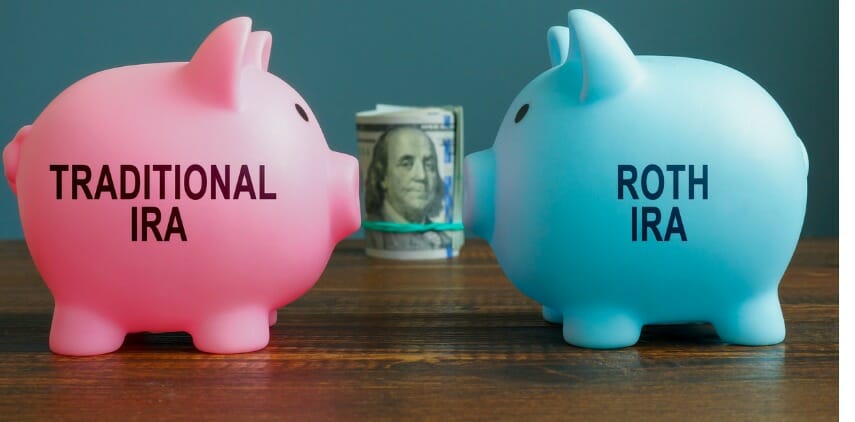The death of a loved one is always a difficult time. Along with the grieving process, you have to handle legal paperwork and review their estate plan, which can be a long and confusing process. For beneficiaries, inheriting the assets of an IRA or Individual Retirement Accounts can be a unique issue because of the complex rules and possible tax implications.
For an inherited or beneficiary IRA, the possible outcomes will depend on the relationship of the account holder and the beneficiary and the exact type of IRA held. Learning the rules and requirements of beneficiary IRAs can help you prepare for the unfortunate time you may need to handle the estate of a loved one and ensure their wishes are honored after they pass away.
What is a Beneficiary IRA?
An inherited Individual Retirement Account, also known as a beneficiary IRA, is an account opened by the beneficiary of a deceased person’s retirement plan after the original owner’s death. Most IRAs can be transferred into a beneficiary retirement plan, including traditional IRAs, SIMPLE, SEP IRAs, Roth, and 401(k) plans.
A beneficiary can be any person the plan owner chooses, but spouses have different rules and options than other beneficiaries. Depending on the type of IRA and the capacity in which you receive the inheritance, there may be different requirements and options to consider.
Options for an Inherited IRA
There are a few options for what to do with an inherited IRA. Because there are many nuances, you should pay attention to all the tax implications to ensure you make the wisest decision for your financial future.
Transfer Funds
As the beneficiary of an IRA, you can choose to transfer your funds into your own inherited IRA. You’ll be able to keep the money in the account to defer taxes while still being able to withdraw a portion of the funds immediately.
You will need to pay taxes on the amount you withdraw, must empty the entire account within 10 years (see the 10-year rule below), and cannot make additional contributions for your retirement.
Take the Cash
With most IRAs, you have the option to take a lump sum of the funds immediately. However, you will be liable for all taxes as this amount will be considered part of your income. Doing it incorrectly could put you into a higher tax bracket and seriously impact your financial stability.
Turn it Down
You have the option to turn down an inheritance. Some may do this because they feel the next eligible beneficiary might benefit more from the estate. If this is the choice, action must be taken within nine months of the original owner’s death. If you’re thinking of making this choice, speak to a lawyer or financial advisor to ensure you are making the right decision and doing so correctly.
Roll into an Existing or New IRA
If your spouse was the original owner of the IRA, you can add your inherited assets to your own existing IRA or create a new IRA in your own name. If you roll the funds into your own account, you will be subject to the standard rules of your IRA, which are typically a 10% tax penalty for withdrawing any funds if you’re under age 59½, and RMDs will begin at age 72.
It’s important to speak to a financial or tax professional to discuss your options before making decisions that could have high tax implications.
Advantages of a Beneficiary IRA
A beneficiary IRA has myriad benefits, including tax-deferred growth and a set withdrawal schedule. If you’re considering setting up a beneficiary IRA, learn all the benefits and if they would work for you.
Tax-Deferred Growth
The first and obvious advantage of a beneficiary IRA is that it allows the money to grow tax-deferred. You won’t need to take a lump sum if you were to withdraw all funds directly from the IRA, and you can continue to benefit from the potential growth of the funds in a tax-advantaged account.
Set Schedule for Withdrawals
A beneficiary IRA can be set up for periodic withdrawals to occur automatically. This also includes the Required Minimum Distributions (RMDs) if you are required to take them.
Spreading Out IRA Distributions
It’s possible to spread out IRA distributions with a beneficiary IRA, taking smaller amounts of time to help preserve assets longer and spread out any tax liability.
What Rules Apply to Beneficiary IRAs?
On the other side, a few rules apply to beneficiary IRAs. It’s important to understand all the implications to ensure you remain IRS compliant while retaining as much of the money as possible that you’re entitled to.
-
The 10-Year Rule
The Secure Act of 2019 implemented the 10-year rule, which states that the beneficiary must take all funds out of the account within 10 years. However, these new rules only apply if the owner of the original IRA died after December 31, 2019. Deaths occurring before this will follow the previous rules. It also states that if your 70th birthday is after July 1, 2019, you don’t need to make any withdrawals until you reach 72 years of age.
There is no limit on how often or when you withdraw money from this account as long as the account is emptied before 10 years. So you can choose to take all money out at once, leave it for the next 10 years to take it out then, or take it out over time. But note that each withdrawal from the inherited IRA will be subject to taxes for the year you make the withdrawal.
Some exceptions to the rule apply:
- You’re a minor. A minor must still start distributions, but instead of the ten-year rule starting from the date the account was inherited, it will start when the minor beneficiary turns 18. So they will need to withdraw all funds from the account by age 28.
- You are disabled or chronically ill. Disabled or chronically ill beneficiaries can stretch withdrawals over their lifetime.
- You’re less than 10 years younger than the account owner. If the account owner was less than 10 years older than you, you could stretch the withdrawals over your lifetime.
- You inherited the IRA from your spouse. You can treat the IRA account as if it were your own if you inherited an IRA from your spouse. For a traditional IRA, distributions are required to begin when you reach 72. If it’s a Roth IRA, you don’t have to take out any withdrawals at all during your lifetime.
-
The 5-Year Rule
Unlike the 10-year rule, which states that all funds must be withdrawn from an account 10 years after the account holder’s death, the 5-year rule refers to how long the account was open before the account holder passed away. This rule also applies specifically to Roth IRAs. It states that earnings from an inherited Roth can be withdrawn tax-free so long as the account was opened at least five years before the account holder died. If the Roth IRA account was opened less than five years before the original owner’s death, the beneficiary will owe taxes on the earnings withdrawn.
Set Up a Beneficiary IRA Today
A beneficiary IRA remains one of the simplest and most beneficiary-friendly estate planning vehicles available. It allows you to continue receiving tax-deferred income after the death of a loved one.
If you have an IRA, update your beneficiaries regularly and consult with a financial advisor to ensure that your account is structured in the most optimal way for your situation.
If you are the beneficiary of an IRA, ensure you learn all the possible tax implications of each option for receiving funds in the event your loved one passes away. Finance is us has plenty of information on banking, insurance, and inheritances, so you are always in the know about your financial future.
Disclaimer: All content on this site is information of a general nature and does not address the circumstances of any particular entity or individual, nor is the information a substitute for professional financial advice and services.














